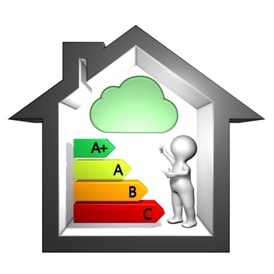 What are VOCs?
What are VOCs?
Volatile organic compounds are any materials made up of carbon, hydrogen, and potentially oxygen that can easily evaporate into a gas under very low boiling points. This makes it possible for them to evaporate under normal indoor temperature and pressure. The volatility of a compound is usually measured by its boiling point. The lower the compound’s boiling point, the more volatile it is. Depending on the exposure and chemical makeup, it can harm your health.
How can it harm your health?
Exposure to VOCs can have short-term and/or long-term health effects. VOC concentrations are stronger indoors then they are outdoors. The emission of VOCs indoors is found everyday in household items such as air fresheners, moth repellant and dry cleaning.
Exposure can cause dizziness, nausea, allergies, asthma, and more. These short-term effects are usually remedied by removal from VOC exposure. For example, if you recently sprayed your bedroom with an air freshener that releases VOC into the air, you may start to have difficulty breathing, or irritation in your nose or throat. Simply removing yourself from the room, or stepping outside for fresh air away from the harmful VOCs will result in immediate relief from the symptoms.
Going beyond the immediate effects from VOCs, if there is prolonged exposure you can experience long-term health effects. These long term health effects include cancer, lung disease, damage to your immune system, and heart disease. However, you can avoid these long-term health effects by using preventative methods for reducing harmful VOCs.
Classification
Sometimes VOCs are classified by how easily they are emitted into the air. In other words, the more volatile they are (having lower boiling points), the easier they are emitted into the air. Compounds that are extremely volatile are hard to measure because they are almost entirely in the air as a gas, or they are found as tiny dust particles on top of surfaces.
The majority of VOCs will be found in solids or liquids that have evaporated into gases. These types of volatile compounds are broken into different classifications:
- Volatile organic compounds (VOCs)
- Semi-volatile organic compounds (SVOCs)
When it comes to VOCs emitted indoors, typically all compounds that evaporate under normal room temperatures are considered VOCs. Although there is a wide range of volatility between Volatile Organic Compound (VOC) and Semivolatile Organic Compound (SVOC), there is a very thin line between them. Both classifications are considered to be within the broad realm of Volatile Organic Compounds when it comes to indoor VOC emission.
So what are SVOCs?
Semivolatile Organic Compounds (SVOCs) are not as volatile as VOCs. As mentioned before, the lower the boiling point for a compound to evaporate into the air, the more volatile it is. So a SVOC, being less volatile, has a higher boiling point at which it evaporates into the air.
Another difference between VOCs and SVOCs is that VOCs have an aroma when released, making them easily noticeable through smell. SVOCs, on the other hand, do not have an aroma, and sit on dust piling up over time. They are typically released from materials such as pesticides, furniture, and some cookware (these materials are the type that do not release a smell). VOCs are typically released from air fresheners, dry cleaning, woodwork, and paints (these materials are the type that do release a smell).
Additional “SVOC vs VOC” resources:
- EPA, Technical Overview of Volatile Organic Compounds, https://www.epa.gov/indoor-air-quality-iaq/technical-overview-volatile-organic-compounds
- Berkeley Lab, SVOCs and Health, https://iaqscience.lbl.gov/voc-svocs
